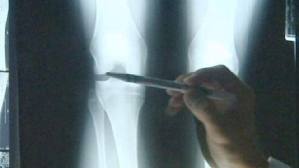What Is The Meniscus Transplant Failure Rate?
Meniscus Transplant
The meniscus transplant failure is not very common. However, the transplant should be done if it is necessary. The meniscus is a knee cartilage found between the femur and tibia, the leg bones. The menisci are important as they support the knee joint and it evenly distributes the load on the joint. It provides lubrication to the knee joint. If there is damage to the menisci the bones in the knee joint get damaged. The allograft meniscal transplantation helps to replace the torn meniscus. The meniscus is harvested from cadavers and tissue- typing is done before the transplant procedure. The meniscus is then transplanted to the patient by experienced surgeons using arthroscopic surgery. Many have doubts about the longevity and durability of the transplants. They also have doubts about the success rate of the transplant.
The transplant can definitely provide long- term pain relief to the patients. It is better to avoid strenuous activities at least for six months after the meniscus transplant surgery. The meniscus transplant failure can occur even after many years of conducting the surgery. The patient can maximize the effectiveness of the surgery by following the instructions provided by the physician and by following rehabilitation and physical therapy.

The Failure Rate Of Transplants
Studies have found that even though the transplant attaches well to the surface of the knee joints, the transplanted menisci might not last forever, much depending on the patient activities. The failure rate is less in younger patients , who are less than 55 years of age. The usual failure rate is ~1.3% at current moment, but advancement in techniques is making better progress . It is possible to delay total knee replacement surgery if the patient opts for meniscus transplant. Candidates with intact Anterior Cruciate Ligament or ACL can have more successful transplant. If ACL is damaged it should be repaired before performing the allograft of meniscus to avoid meniscus transplant failure. More studies are necessary to find out the reasons for the failure and how to avoid the failures of transplant surgery. The activity level of the patient after the surgery also a major factor for potential recurrences of meniscus problems. Good results are possible in patients with normal knee alignment. It is necessary to evaluate the long-term results and compare the results of different techniques to know more about the failure of meniscus.